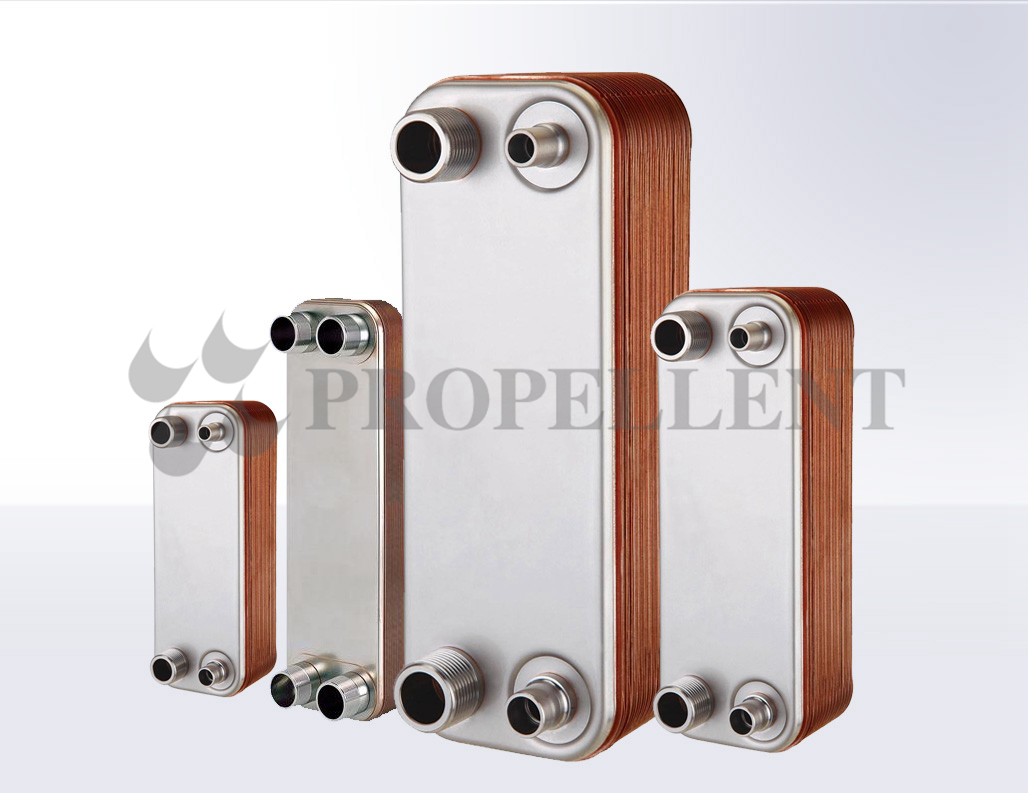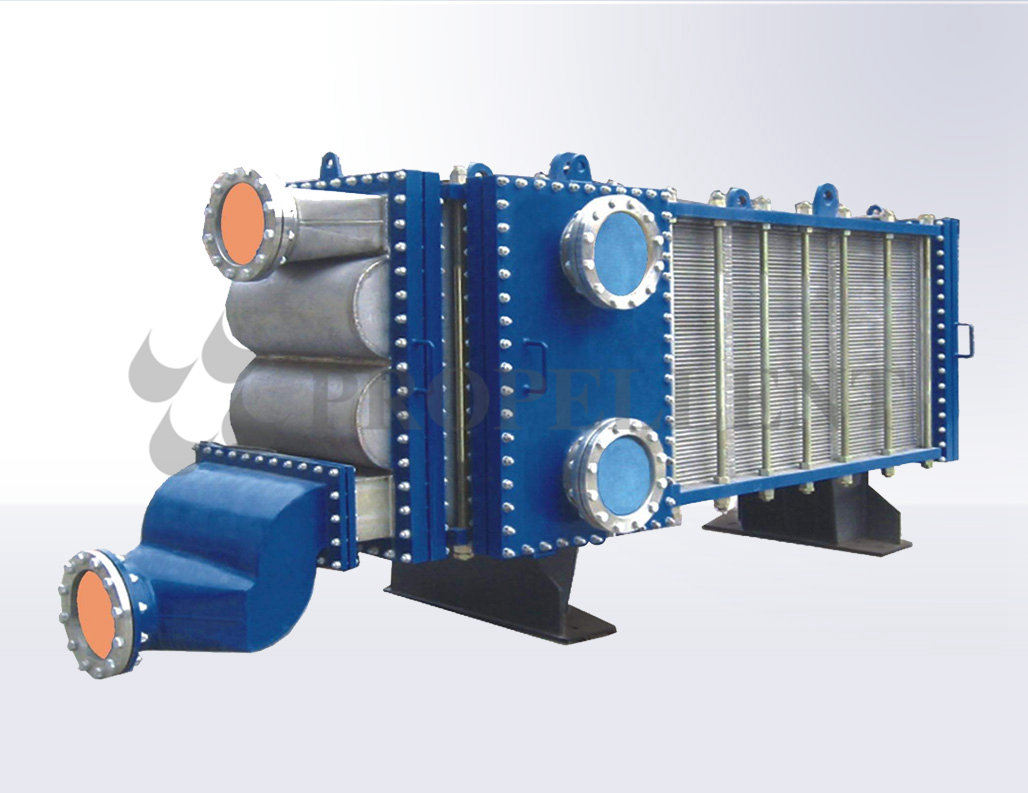Position: Home>News Center>News>How to improve the heat transfer efficiency of plate heat exchangers
News
How to improve the heat transfer efficiency of plate heat exchangers
Source
:http://www.puruipule.cn
Time:2020-02-24 15:10:03
Clicks:440
The key to improve the heat transfer efficiency of the plate heat exchanger is to increase the heat transfer coefficient and the logarithmic average temperature difference. Only when the heat transfer coefficients of the surfaces on both sides of the hot and cold plates are increased, the thermal resistance of the dirt is reduced, and the use of high heat transfer plates to reduce the thickness of the plates can effectively increase the heat transfer coefficient of the heat exchanger.
The key to reducing the thermal resistance of the dirt layer of the heat exchanger is to prevent scaling. When the thickness of the plate is 1mm, the heat transfer coefficient is reduced by about 10%. Therefore, it is necessary to monitor the water quality on both sides of the heat exchanger to prevent sheet fouling and prevent debris from sticking to the plate. In order to prevent stolen water and corrosion of steel parts, some heating devices are added to the heating medium. Therefore, attention must be paid to water quality and adhesives that cause debris and contamination of the heat exchange plate. If there is sticky debris in the water, a special filter should be used. When choosing a potion, it is appropriate to choose a non-stick agent.
The flow patterns of plate heat exchangers are counter-current, co-current and mixed-flow (upstream and downstream). Under the same working conditions, the logarithmic average temperature difference is the largest, the flow rate is the smallest, and the mixed flow pattern is between the two. The method of increasing the logarithmic average temperature difference of the heat exchanger is to use a current or a mixed flow type near the current to increase the temperature of the hot-side fluid as much as possible and reduce the temperature of the cold-side fluid.
For single-flow plate heat exchangers, maintenance is easy, and fluid inlet and outlet pipes should be installed on the fixed end plate side of the heat exchanger as much as possible. The temperature difference of the medium, the natural convection of the fluid is larger, and the formation of more obvious chains is affected. The impact of the medium inlet and outlet position should be based on the progress of the hot fluid activity in the cold fluid device to reduce the impact of retention and improve Heat transfer efficiency.
The key to reducing the thermal resistance of the dirt layer of the heat exchanger is to prevent scaling. When the thickness of the plate is 1mm, the heat transfer coefficient is reduced by about 10%. Therefore, it is necessary to monitor the water quality on both sides of the heat exchanger to prevent sheet fouling and prevent debris from sticking to the plate. In order to prevent stolen water and corrosion of steel parts, some heating devices are added to the heating medium. Therefore, attention must be paid to water quality and adhesives that cause debris and contamination of the heat exchange plate. If there is sticky debris in the water, a special filter should be used. When choosing a potion, it is appropriate to choose a non-stick agent.
The flow patterns of plate heat exchangers are counter-current, co-current and mixed-flow (upstream and downstream). Under the same working conditions, the logarithmic average temperature difference is the largest, the flow rate is the smallest, and the mixed flow pattern is between the two. The method of increasing the logarithmic average temperature difference of the heat exchanger is to use a current or a mixed flow type near the current to increase the temperature of the hot-side fluid as much as possible and reduce the temperature of the cold-side fluid.
For single-flow plate heat exchangers, maintenance is easy, and fluid inlet and outlet pipes should be installed on the fixed end plate side of the heat exchanger as much as possible. The temperature difference of the medium, the natural convection of the fluid is larger, and the formation of more obvious chains is affected. The impact of the medium inlet and outlet position should be based on the progress of the hot fluid activity in the cold fluid device to reduce the impact of retention and improve Heat transfer efficiency.
Keywords:plate heat exchanger



